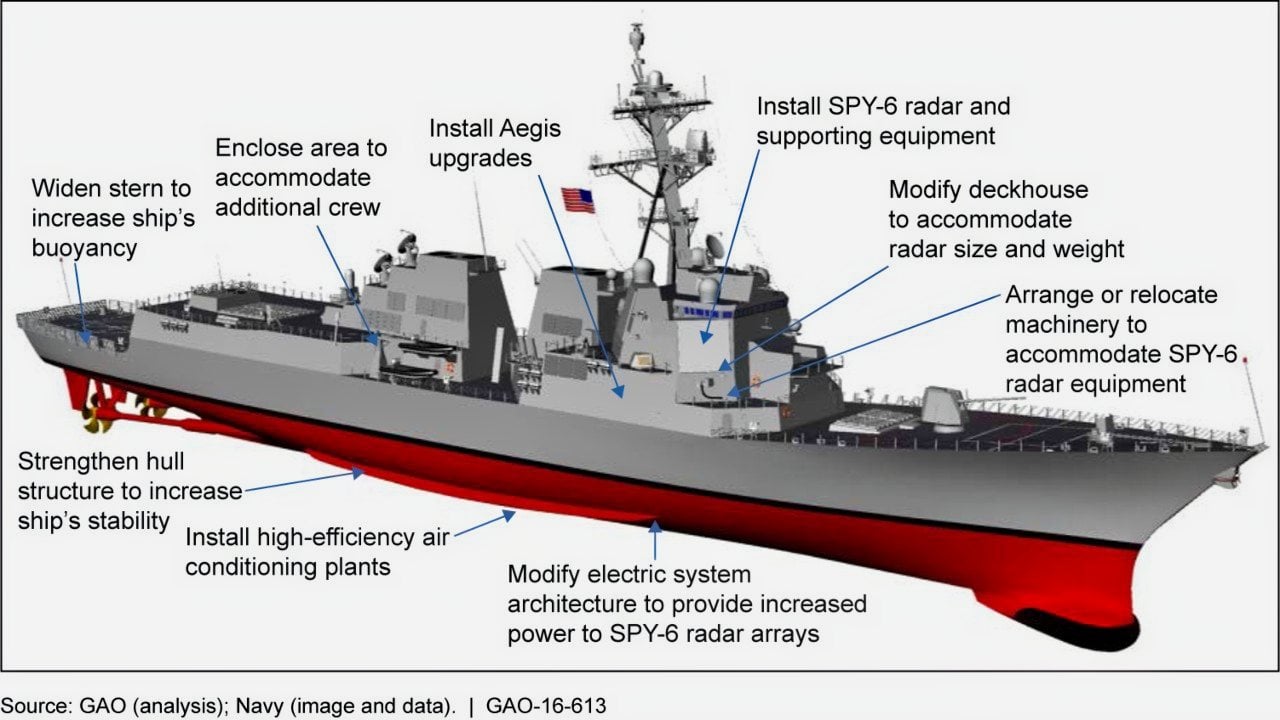Does Cheap Missiles Mean the Era of Navy Surface Warships Is Over?
Russia’s misfortune at sea does not necessarily mean that the rest of the world can rest upon the obsolescence of the surface warship. The U.S. Navy should however worry about the proliferation of cheap missiles.
What future for surface warships?
More than a year on from the sinking of RFS Moskva, the flagship of the Russian Black Sea Fleet, we have few clear lessons for the naval architects who must build new fleets or the legislatures that must pay for them about the future of naval warfare.
Questions linger, and we don’t yet have all the answers.
Futurists consistently overpredicted the end of the surface ship over the 20th century. The submarine, then the aircraft, then the nuclear weapons were supposed to spell the end of surface warships. Submarines proved to be a serious but manageable threat, aircraft became part of a warship’s toolset, and against nukes warships were fortunately never tested in real combat.
But simply because critics of surface vessels have been wrong in the past does not mean they’ll always be wrong in the future.
Exceptional Circumstances Make Dangerous Lessons
One point that has become clear is that the circumstances of the sinking of RFS Moskva were exceptional, and possibly not applicable to the operations of a modern surface fleet. Moskva was an ancient warship without up-to-date electronics, sensors, and anti-air defenses. There is precedent for premature jumps to conclusions about changes in maritime technology.
In December 1941 the destruction of HMS Prince of Wales and HMS Repulse by Japanese naval aircraft seemed to suggest that even the most capable surface ships were acutely vulnerable to air attack.
Experience over the next four years demonstrated that when operated effectively, surface warships posed an extremely difficult problem for the aircraft of the day.
But Investments Must Be Useful
Of course, it isn’t enough just to say that the answer for the future surface fleet is that it needs to be less antiquated and less poorly handled. A weapon is useful if it can be used in a variety of circumstances, and if surface ships are so fragile and vulnerable that they can be used with only the greatest of care then they’re not necessarily worth further investment.
Surface warships ARE vulnerable to a variety of attacks, including aircraft, submarines, shore-launched missiles, and other surface ships. However, surface warships also offer visible presence. They provide the core of a system of air and sea control that enables a navy to shape its maritime environment. One of the reasons that Russia has been forced to allow grain transit from Ukrainian ports is that it lacks confidence that its surface vessels can survive in an interdiction role.
Moscow clearly could order the destruction of grain-laden ships by air or submarine, but that would result in a public relations disaster, especially in the developing world.
What Does the Future Hold for Surface Warships?
The reason the naval war in the Black Sea has cooled off isn’t necessarily because surface ships have become obsolete. Rather, it’s a series of factor idiosyncratic to the combatants and to the geography of the region. Notably, the biggest naval powers have NOT concluded that surface ships are obsolete.
China continues to build surface warships, as does Japan, South Korea, the US, and all of the major European navies. Indeed, the trend for many navies is not away from surface ships, but towards larger vessels that are more capable of protecting themselves, carry a greater punch, and are more resilient to attack. Moreover, big warships continue to act as important tools of influence.
Just in Russia’s backyard, Turkey has celebrated the commissioning of a new warship, TCG Anadolu, the Beast of the Black Sea.
The demands of building and maintaining a survivable fleet may seem daunting, but the costs of not having a fleet are also significant. Moreover, a surface fleet can incur serious costs on an opponent, both through endangering trade and through forcing the development of counter-measures.
What we forget is that the cost of an anti-access “system of systems” should be measured not by the price of a single missile but rather by the cost of all the aircraft, sensors, and satellites that make that missile useful. And surface ships can torment their own tormentors. Submarines are hardly invulnerable. Aircraft can be shot down (Ukraine did a number on the Russian air forces over the weekend, for example). Surface missile launchers can be destroyed.

Ironically, the most determined prayers for an end to the surface ship may be heard from Moscow. Russia’s military shipbuilding industry almost certainly has no meaningful future apart from submarines, its existing fleet is geriatric and poorly maintained, and it’s at risk of losing access not just to the Baltic but also to the Black Sea.
But Russia’s misfortune at sea does not necessarily mean that the rest of the world can rest upon the obsolescence of the surface warship.
About the Author: Dr. Robert Farley
Dr. Robert Farley has taught security and diplomacy courses at the Patterson School since 2005. He received his BS from the University of Oregon in 1997, and his Ph. D. from the University of Washington in 2004. Dr. Farley is the author of Grounded: The Case for Abolishing the United States Air Force (University Press of Kentucky, 2014), the Battleship Book (Wildside, 2016), and Patents for Power: Intellectual Property Law and the Diffusion of Military Technology (University of Chicago, 2020). He has contributed extensively to a number of journals and magazines, including the National Interest, the Diplomat: APAC, World Politics Review, and the American Prospect. Dr. Farley is also a founder and senior editor of Lawyers, Guns and Money.


